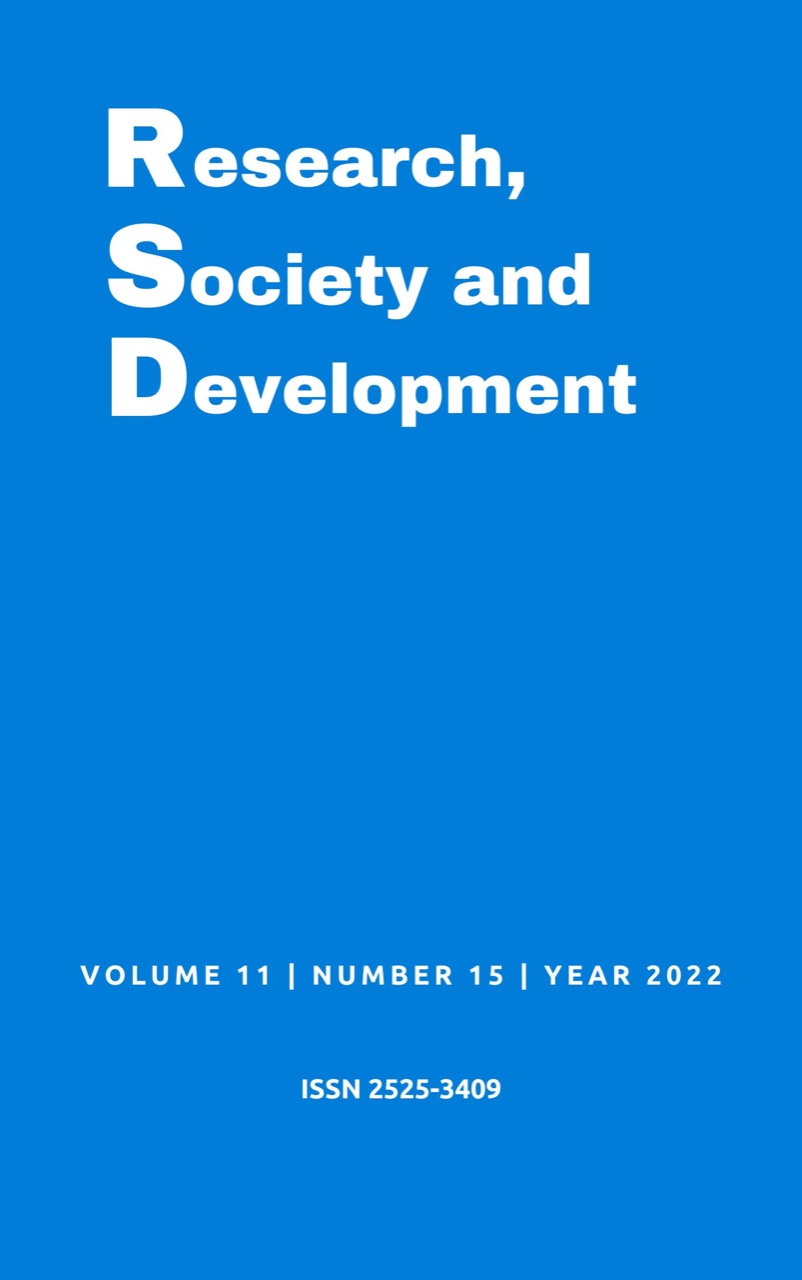Análisis de la viabilidad de ejecución de rampas pré-fabricadas
DOI:
https://doi.org/10.33448/rsd-v11i15.37210Palabras clave:
Hormigón armado, Premoldeado, Rampas, Viabilidad.Resumen
Se trata de la investigación sobre Viabilidad Ejecutiva de rampas prefabricadas, desde la perspectiva de la ingeniería civil. Las rampas peatonales prefabricadas son antideslizantes y de bajo mantenimiento, mientras que las rampas de carga prefabricadas están prediseñadas y personalizables en longitud, anchura y altura. objetivo discutir la forma de construir rampas prefabricadas que se acercan a la estructura hecha en ingeniería. Este estudio, por tratarse de una investigación bibliográfica, trajo estudiosos del área que muestran cuán importante es el análisis de la factibilidad de la ejecución de rampas prefabricadas y concluyen que el concreto vaciado en sitio es más viable financieramente en el corto plazo, el moldeo prefabricado que necesita mano de obra calificada y maquinaria pesada, lo que a la larga sería una gran desventaja, haciendo económicamente más ventajoso el trabajo en moldeado en sitio.
Referencias
Breitenberger, M.; Kreutz, J. & Bramil, T. (2018). Efficient BIM for planning infrastructure projects. Beton- Und Stahlbetonbau, 113(1), 68-76.
Camacho, J. S. et al. (2015). The influence of grouting and reinforcement ratio in the concrete block masonry compressive behavior. Rev. IBRACON Estrut. Mater., 8(3), 341-364 <http://www.scielo.br/scielo.php?script=sci_arttext&pid=S1983-41952015000300341&lng=en&nrm=iso>.
Castillo, T.; Alarcon, L. F. & Pellicer, E. (2018). Finding Differences among Construction Companies' Management Practices and Their Relation to Project Performance. Journal of Management in Engineering, 34(3).
Couto, J. A. S. & et al. (2020). O concreto como material de construção. Caderno de Graduação-Ciências Exatas e Tecnológicas-UNIT, 2013.Disponível em: https://periodicos.set.edu.br/index.php/cadernoexatas/article/view/552.
De Almeida Filho, F. M. & Corrêa, M. R. S. A. (2020). Estruturas de pisos de edifícios com a utilização de cordoalhas engraxadas. Tese de Doutorado-Universidade de São Paulo, 2002. http://web.set.eesc.usp.br/static/data/producao/2002ME_FernandoMenezesdeAlmeidaFilho.pdf.
Guia de normalização para apresentação de trabalhos acadêmicos da Universidade Paulista (2014).: ABNT / Biblioteca Universidade Paulista, UNIP. / revisada e atualizada pelas bibliotecárias Alice Horiuchi e Bruna Orgler Schiavi. – 2014. 49 p
Mendes, G H. C. (2017). Estudo de viabilidade referente à implantação de uma passarela de pedestre localizada na BR491- KM 239+335m. Centro Universitário do Sul de Minas, 2017.
Merritt, B. & Frank McCullough, Ned H. (2021). Burns, Relatório de Resumo do Projeto 1517-S Projeto 9-1517: Viabilidade de Lajes Pré-moldadas em Pavimentos PCC Fevereiro de 2021 Viabilidade do Pré-Moldado Protendido Painéis de Concreto para Aceleração Construção de Pavimento PCC.
Minayo, M. C. (2001). Ciência, técnica e arte: o desafio da Pesquisa Social. I (Org.) Pesquisa social: teoria, método e criatividade. Petrópolis: Vozes, 09-30.
Miranda, L R. (2008). Cálculo e detalhamento prático de pilares para edificações de pequeno e médio porte. UFSCar, 198 f.
Mohamad, G. et al. (2015). Development of a new geometric design for non-modular concrete blocks for structural masonry. Ambient. constr., 15(2), 127-152, http://www.scielo.br/scielo.php?script=sci_arttext&pid=S1678-86212015000200127&lng=en&nrm=iso>. http://dx.doi.org/10.1590/s1678-86212015000200018.
Prodanov, C. C. & Freitas, E. C. (2013). Métodos e técnicas da pesquisa e do trabalho Acadêmico. (2a ed.), Freevale.
Rizzatti, E. et al. (2012). Mechanical behavior analysis of small-scale modeling of ceramic block masonry structures: geometries effect. Rev. IBRACON Estrut. Mater., 5(5), 702-736. http://www.scielo.br/scielo.php?script=sci_arttext&pid=S1983-41952012000500007&lng=en&nrm=iso>.
Scadelai, M. A. & Pinheiro, L. M. (2003). Dimensionamento de pilares de acordo com a nova NBR 6118. [CD-ROM]. In: 5o SIMPÓSIO EPUSP SOBRE ESTRUTURAS DE CONCRETO, 7-10 junho. São Paulo, EPUSP. 20 p. (código SIMP192), 2003.
Silva, R. C. & Pinheiro, L. M. (200). Excentricidades em Pilares segundo o Projeto de Revisão da NBR 6118. IV Simpósio EPUSP sobre Estruturas de Concreto, 2002.
Silva, D. & et al. (2018). Patologias em obras de arte. Fundação Oswaldo Aranha Centro Universitário de Volta Redonda.
Silva, N. C. (2018). Sistemas construtivos de madeira: análise comparativa entre dimensionamentos realizados com base em uma estrutura real. Universidade Federal de Uberlândia – UFU Faculdade de engenharia civil – Feciv.
Silva, T. S. & Santos P. R. R. (2022). Estruturas Pré-moldadas na construção civil. Graduando em Engenharia civil – Faculdade AGES.
Soto, I. I.; Ramalho, M. A. & Izquierdo, O. S. (2013). Post-cracking behavior of blocks, prisms, and small concrete walls reinforced with plant fiber. Rev. IBRACON Estrut. Mater., 6(4), 598-612 <http://www.scielo.br/scielo.php?script=sci_arttext&pid=S1983-41952013000400006&lng=en&nrm=iso>.
Veríssimo, G. de S. & Cesar JR, K. M. L. (2020). Concreto Protendido-Fundamentos Básicos Universidade Federal de Viçosa, Departamento de Engenharia Civil, Viçosa, Minas Gerais, 1998. http://wwwp.feb.unesp.br/lutt/Concreto%20Protendido/CP-vol1.pdf.
Descargas
Publicado
Número
Sección
Licencia
Derechos de autor 2022 Halles Augusto Silva Guimarães; Noam Alves Martins Marson

Esta obra está bajo una licencia internacional Creative Commons Atribución 4.0.
Los autores que publican en esta revista concuerdan con los siguientes términos:
1) Los autores mantienen los derechos de autor y conceden a la revista el derecho de primera publicación, con el trabajo simultáneamente licenciado bajo la Licencia Creative Commons Attribution que permite el compartir el trabajo con reconocimiento de la autoría y publicación inicial en esta revista.
2) Los autores tienen autorización para asumir contratos adicionales por separado, para distribución no exclusiva de la versión del trabajo publicada en esta revista (por ejemplo, publicar en repositorio institucional o como capítulo de libro), con reconocimiento de autoría y publicación inicial en esta revista.
3) Los autores tienen permiso y son estimulados a publicar y distribuir su trabajo en línea (por ejemplo, en repositorios institucionales o en su página personal) a cualquier punto antes o durante el proceso editorial, ya que esto puede generar cambios productivos, así como aumentar el impacto y la cita del trabajo publicado.


